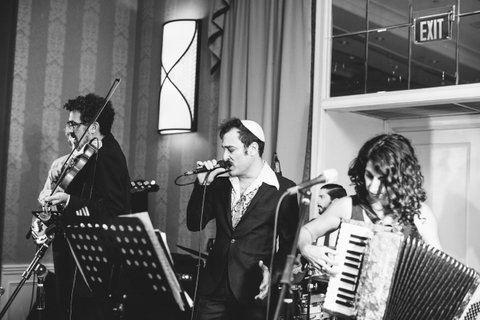Jewish Wedding Band’s Job
Jewish weddings and bar mitzvahs used to be the main social events in the life of a Jewish family. In a way, they still are. When else do all the generations of a family and friends from every circle get together in one room? On a happy occasion, that is. All of a sudden, your work colleague dances next your grandmother and your best friend.
As a result, a Jewish wedding band’s job is to keep all these members of different ages and social circles happy. How do we do that? Golem has a huge repertoire at our disposal. We have the songs in many different categories. We are always striving to create a perfect balance between them. For example, we have Jewish songs of many genres (hora, swing, bossanova, rock) that we insert into a set of covers. We make sure it’s never “too much” of one or the other.
The covers, in turn, break down by genre: rock, funk, Latin, jazz standards, swing. In addition, we balance the set by tempo: fast, medium, and slow songs. As a general rule, we play four fast songs and then one slow. We thus allow the dancers to draw close to one another and then separate again. At many weddings and bar mitzvahs, there is also special music for that group of guests. We have French-language, Spanish, Russian-language and songs that Russians particularly enjoy (Joe Dassin, Salvatore Adamo, etc.) We change the balance at every party to reflect the people for whom we are playing.
Not only do we play something for everyone, but we manage to get everyone to dance together. For instance, when we play a rock song following a tango, the ballroom aficionados usually stay on the floor to rock. On the contrary, some guests who might never have jumped up to do a Yiddish waltz are there already after a funk song. They find out that waltzing is easier and more fun than they ever thought. I love to see a young couple whirling around the room or an elderly gentleman grooving to Low Rider. Then I know that Golem has done it again.
